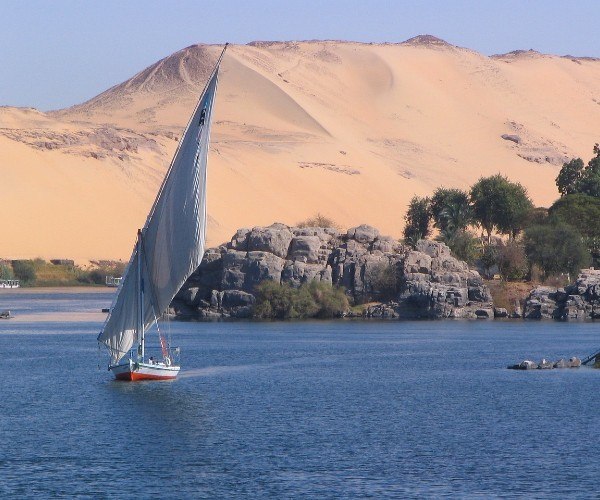If you’ve just arrived from busy Luxor or Cairo, Aswan is a laid-back and welcoming town that offers a peaceful break. Aswan is spread out along the banks of the Nile and is the ideal starting point for seeing the temples, monuments, and other tourist attractions in the southern regions of Upper Egypt, as well as the completely different Nubian culture of the region.
Ramses II’s enormous temples at Abu Simbel, the temple on the island of Philae, and the Temple of Kom Ombo are all within easy day trips of Aswan, which is also the closest town to all of them.
The finest way to see Aswan’s charms is to board a felucca, a traditional sailboat, and explore the city from the water, where Aswan was once a significant commerce hub. The river here is filled with islands that are home to charming mud-brick Nubian settlements and is surrounded by enormous sand dunes from the West Bank.
Everything is really photogenic, especially around twilight when the river shimmers with the setting sun and hundreds of lateen-sailed feluccas take to the water. Aswan is one of the top destinations in Egypt for serious photographers looking to capture iconic Nile vistas.
1. Elephantine Island
There are numerous old ruins on Elephantine Island that are worth exploring. The temple of Khnum is completely destroyed, and all that is left of it is a few scattered stones and broken columns. However, you can still see the temple’s square granite gateway, which was found by the German Swiss excavation team while they were looking for the remains of the new kingdom on the island. A restored temple called Satis temple can be seen in the island’s north. On top of the ruins of the middle kingdom, the temple was erected during the reign of Queen Hatshepsut and King Tuthmose III.
A highly interesting highlight is the island-based Aswan Museum. Mummies and statues, as well as relics dating from the predynastic through the Roman and Byzantine periods, were discovered on the island when it was first established in 1912. The Nilometer, which is said to be among the earliest Nilometers, is located in front of the museum and was used by the ancient Egyptians to gauge Nile floods. The massive rocks on the shores of the island, bearing the inscriptions of the kings and governors who ruled the island throughout history, are another outstanding characteristic that sets the island apart.
2. Felucca trip
Taking a felucca out on the river to explore…
Click Here to Read the Full Original Article at A Luxury Travel Blog…
